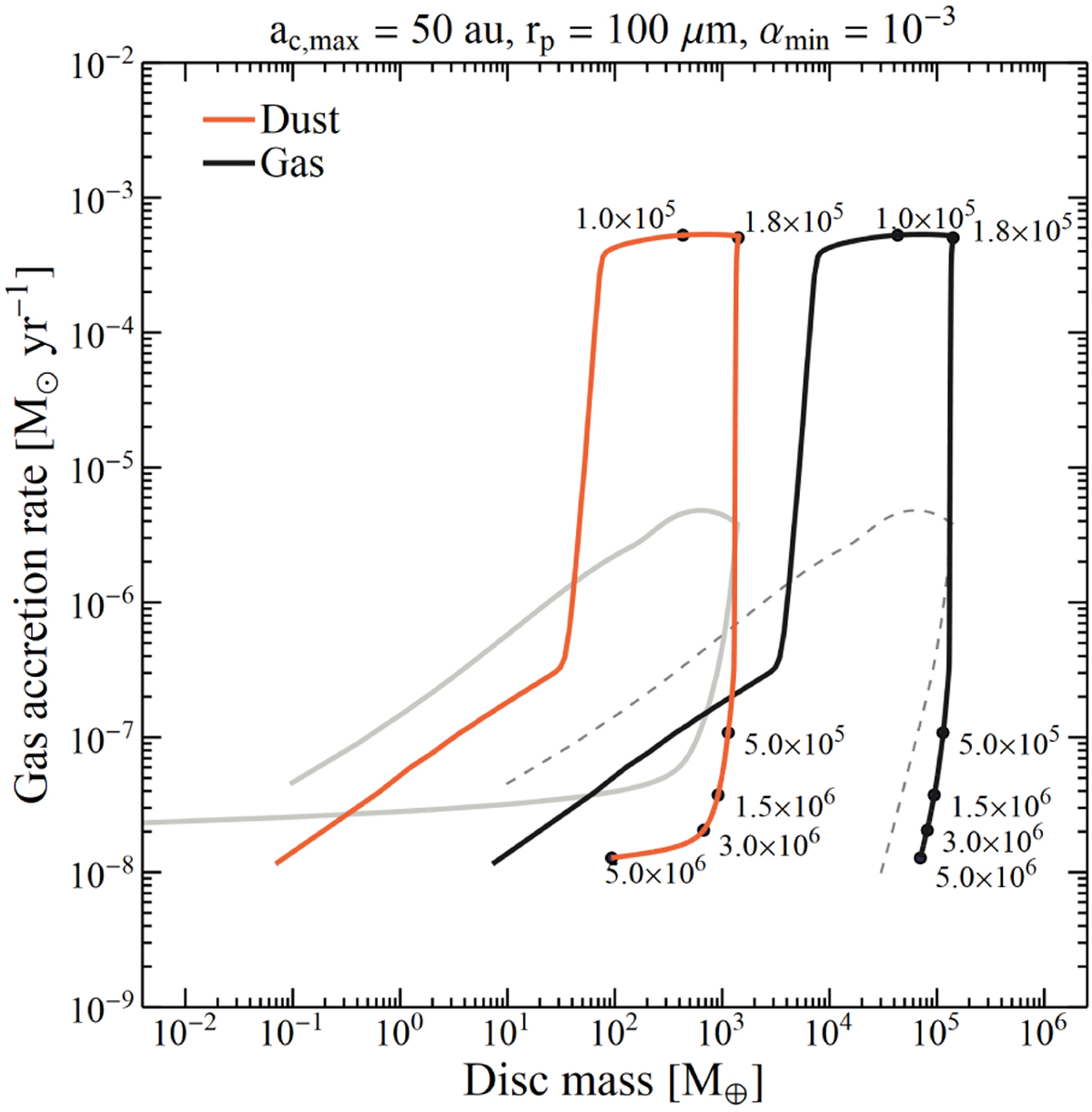Fig. B.1

Stellar gas accretion rate as a function of disc mass using αmin = 10−3. The greylines show the reference case dust mass (solid line) and gas (dashed lines). Decreasing αmin results in the disc becoming more gravitationally unstable. This causes the very large increase in the accretion rate in the second half of the formation phase. The accretion rate then drops rapidly until about 0.5 Myr. After this it decreases more slowly. The dust drift turn-over occurs later with lower αmin and the dust disc drains slower. The final gas accretion rate is similar for αmin = 10−3 and αmin = 10−2, but the disc masses of the αmin = 10−3 case are higher.
Current usage metrics show cumulative count of Article Views (full-text article views including HTML views, PDF and ePub downloads, according to the available data) and Abstracts Views on Vision4Press platform.
Data correspond to usage on the plateform after 2015. The current usage metrics is available 48-96 hours after online publication and is updated daily on week days.
Initial download of the metrics may take a while.


